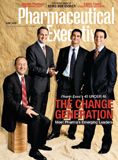Mightier Than the Sword
When it comes to marketing, every syllable speaks volumes
In advertising, words are as important as images. Every word chosen represents a major decision on the part of the creative team. What may seem like nitpicking is actually an intrinsic part of the process of creating an unforgettable message. Sometimes even subtle differences in language can translate to major differences in how a message motivates people.

David Kweskin
To delve into the issue of how messaging influences consumer attitudes and behaviors, TNS Healthcare tested 77 DTC messages in the oral contraceptives category among 533 women between the ages of 18 and 45. The research, conducted in March 2008, looked at how well messages motivated women to speak with their physicians, visit the product's Web site or, call an 800 number.
The findings show how even small changes in wording can greatly impact message effectiveness. For example, the following message for YAZ was highly effective in motivating women to talk to their doctors:
"It's the first and only contraceptive proven to treat emotional and physical pre-menstrual symptoms severe enough to impact your life, a condition doctors call PMDD."
Testing found that the same message without that final phrase—"a condition doctors call PMDD"—was significantly less motivating. Why would those five words make such a difference in results? Researchers hypothesize that naming a condition—such as PMDD, ED (erectile dysfunction) or OAB (overactive bladder)— makes it a "real" ailment in the minds of consumers. As a result, people feel comfortable going to their doctors for treatment.
Likewise, messages can have the same theme yet very different levels of effectiveness depending on how they are presented. Consider these two messages:
"Lybrel is intended for women who are interested in putting their periods on hold."
"[With Seasonique] You should experience four scheduled periods a year, instead of the usual 13."
The first message, for Lybrel, was not very effective in motivating women to speak with their doctors. The second, for Seasonique, was among the most effective. Researchers' theory is that the term "on hold" has negative connotations—such as being put "on hold" during a phone call. After all, things on hold don't go away, but lie in wait. Not a very appealing concept! By contrast, saying four periods vs. 13 conjures up the image of actually having fewer periods—a much more attractive notion than having periods "on hold."
The efficacy of DTC messaging also varies by demographic and function (the action you are looking to drive will impact which DTC approaches are best to use). These differences are evident in the messages that were most motivational for different audiences.
For example, the Seasonique message about experiencing four vs. 13 periods a year was most effective in motivating women between ages 36 and 45 to visit a Web site. But the most effective message to get women not currently taking an oral contraceptive to call an 800 number is from YAZ: "YAZ also can help keep your skin clear." And the most motivating message to get woman from 18–35 to call an 800 number is from Cerazette: "In contrast to the combined pill, Cerazette can be used by women who are breast feeding."
Finally, for women in the post child-bearing years, health issues take precedence over messages built around reducing periods or supporting breast feeding safety and messages centered on cosmetic concerns, such as clearer skin. The winning message for women in the post child-bearing demographic (most likely to get them to visit a Web site) is from Lybrel, and focuses on reducing cancer risks:
"Oral contraceptive use may provide some protection against developing cancer of the ovaries and cancer of the lining of the uterus."
Consumers are not just influenced by the words they hear or read, but also by the images that create context. As with verbal messages, graphic messages vary in their appeal—and their ability to drive specific actions. For example, the Lybrel image of a woman who looks like she's dancing in a flowing dress is most effective at convincing women to speak to their doctors at their next appointment. The YAZ image of a woman in a fighter's stance is most effective in motivating post-childbearing women to visit a Web site.
These images are quite different. Lybrel's graphic communicates grace and freedom (the woman looks almost as though she is about to take flight). YAZ's graphic, by contrast, suggests power and strength (the woman is poised to punch). Yet each of these photos is effective in driving a specific action. In order to select the right picture, it is critical to know who your target audience members are, as well as the action you want them to take.
In addition, it's important to remember that some images won't work well with any group, and can dilute the power of your message. For example, the Yasmin photo of a young woman passively resting her head on her boyfriend's shoulder was the least motivating, across the board. It is important to have a research tool that allows you to test the full range of possible graphic and message combinations, both to identify those that work, and to eliminate those that won't do your brand justice in the market.
Who? What? Where? How?
Clearly, different messages and graphics appeal to different audiences. So how do you find the best combination of images, spokespeople, and messages for DTC campaigns?
First, test a large number of message and image combinations. To make sure your best ideas don't end up on the cutting room floor, be sure you choose a research methodology that allows space for a wide range of options—even the most bold. Taking all message and graphic options into consideration, it's possible to end up with 100 or more alternatives—and every one of those needs to be assessed to ensure the best results.
Second, consider the target audience. Think about whom the ad is seeking to motivate. Those with moderate or severe conditions? Current users, or those disengaged from the healthcare system? People on treatment, or those not yet diagnosed? Different audiences respond to different approaches.
Third, consider the actions the audience should take as a result of seeing the ad. The ad that will send a viewer to the doctor may be different than one that would convince him or her to call an 800 number or to visit a branded Web site. (Keep in mind that different actions are connected in driving brand performance. For example, a Web site visit can increase intent to contact a physician by as much as 50 percent. In fact, Web site visits are among the most common actions that DTC ads drive—and are strongly correlated with both new and total prescriptions.)
Fourth, test messages in bundles—just like viewers see them in the real world. It's a combination of all the elements that determines how well an ad will work. Looking at ad elements in isolation won't give you a true picture of how consumers will respond.
In the end, the key to an effective DTC ad is one in which all the elements work together. If the message doesn't resonate, the ad won't do its job. The key to effective advertising is selecting the right message to share and the right graphic context in which to share it.
David Kweskin is senior vice president at TNS. He can be reached at david.kweskin@tns-global.com

The Misinformation Maze: Navigating Public Health in the Digital Age
March 11th 2025Jennifer Butler, chief commercial officer of Pleio, discusses misinformation's threat to public health, where patients are turning for trustworthy health information, the industry's pivot to peer-to-patient strategies to educate patients, and more.
Navigating Distrust: Pharma in the Age of Social Media
February 18th 2025Ian Baer, Founder and CEO of Sooth, discusses how the growing distrust in social media will impact industry marketing strategies and the relationships between pharmaceutical companies and the patients they aim to serve. He also explains dark social, how to combat misinformation, closing the trust gap, and more.